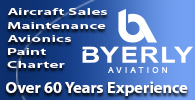Importance of Calculating Reference RPM Torque Settings for Takeoff
Being that summer is here, it is important to be aware of power management during a critical phase of flying, such as takeoff. Pilots must ensure the Condition lever is in the correct position in order to achieve the maximum prop RPM.
A takeoff roll at less than 100 percent prop RPM will cause the engine to run at a higher temperature and reach its limit sooner. This is due to a reduction of thrust from a propeller operating at less than 100 percent takeoff RPM, which has the effect of providing less cooling to the engine, and less than maximum thrust.
Typically, of the total horsepower produced by a turbine engine, only a third is utilized to produce actual thrust. The other two-thirds is needed for engine cooling. It is equally important for engine health to calculate the correct reference torque for takeoff and comply with that setting. As most pilots know, with too little torque (below reference torque calculation) takeoff power may not be available. But the information to assess engine health will also not be available. On the other hand, exceed the reference torque and the engines will experience increased wear beyond what is necessary for a safe takeoff.
Is the increased turbine blade wear significant? It would seem that such a minor difference in torque would have negligible effects on such an apparently durable composite alloy turbine blade. However, considering the heat and inertial forces on a rotating blade, each exposure to higher than normal temperatures can play a significant role in the overall life of expensive turbine blades. Consider that a first-stage turbine blade can experience temperatures as high as nearly 1000 degrees Celsius and centrifugal forces over 9000 lbs (>50,000 PSI) at 100 percent torque RPM. A mere 3 percent reduction in torque can lower that pressure by 600 lbs (approximately 2000 psi), thus reducing the effects of turbine blade creep (blade distortion over time due to excessive heat and pressure exposure).

As depicted below for a typical first-stage turbine blade, excessive temperatures and pressure cause distortion over time. This distortion is reduced or increased based on pressure and temperature exposure levels over the life of the blades.
When calculating takeoff power settings, it’s important to ensure access to the most accurate takeoff data. Temperature indications can be erroneous due to conductive radiant surfaces distorting the true free air temperature. Additionally, there may be minor variations from one temperature report to another, depending on location. Be sure to use the best source, or combination of sources. Pressure altitude is also required and should not be confused with other reported altitudes, such as field elevation. The takeoff considerations for power setting determination are:
• Engine torque versus turbine temperature
• Indicated OAT
• Pressure altitude
• Ram rise
Calculating and complying with the appropriate reference torque prior to every takeoff can provide numerous benefits, from safety (takeoff assurance) to financial (engine health and trending as well as wear reduction). It’s important to have the most accurate information available for takeoff and to execute the takeoff utilizing appropriate reference torque while monitoring engine instrument indications and maintaining proper handling technique. Fly safely and strive to always understand the current condition of your engines.
Please remember, the above tips are intended to be supplemental to the published operating procedures. For a complete study on aircraft planning and operations for takeoff, please refer to the procedures and recommendations published in the FAA/CAA approved AFM and POM for the appropriate make and model Twin Commander. As always, pilots can make the difference in engine operating life and maintenance costs.
For additional information concerning TPE331 design and operation, please contact Rob Erlick at 480-399- 4007, or send an e-mail to [email protected]. Honeywell’s TPE331 Pilot Tips booklet is available on the Honeywell App or online at https://pilots.honeywell.com; register with name and email, point to “Engines” then “TPE331” then click on “Pilot Tips”.




